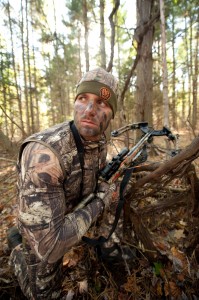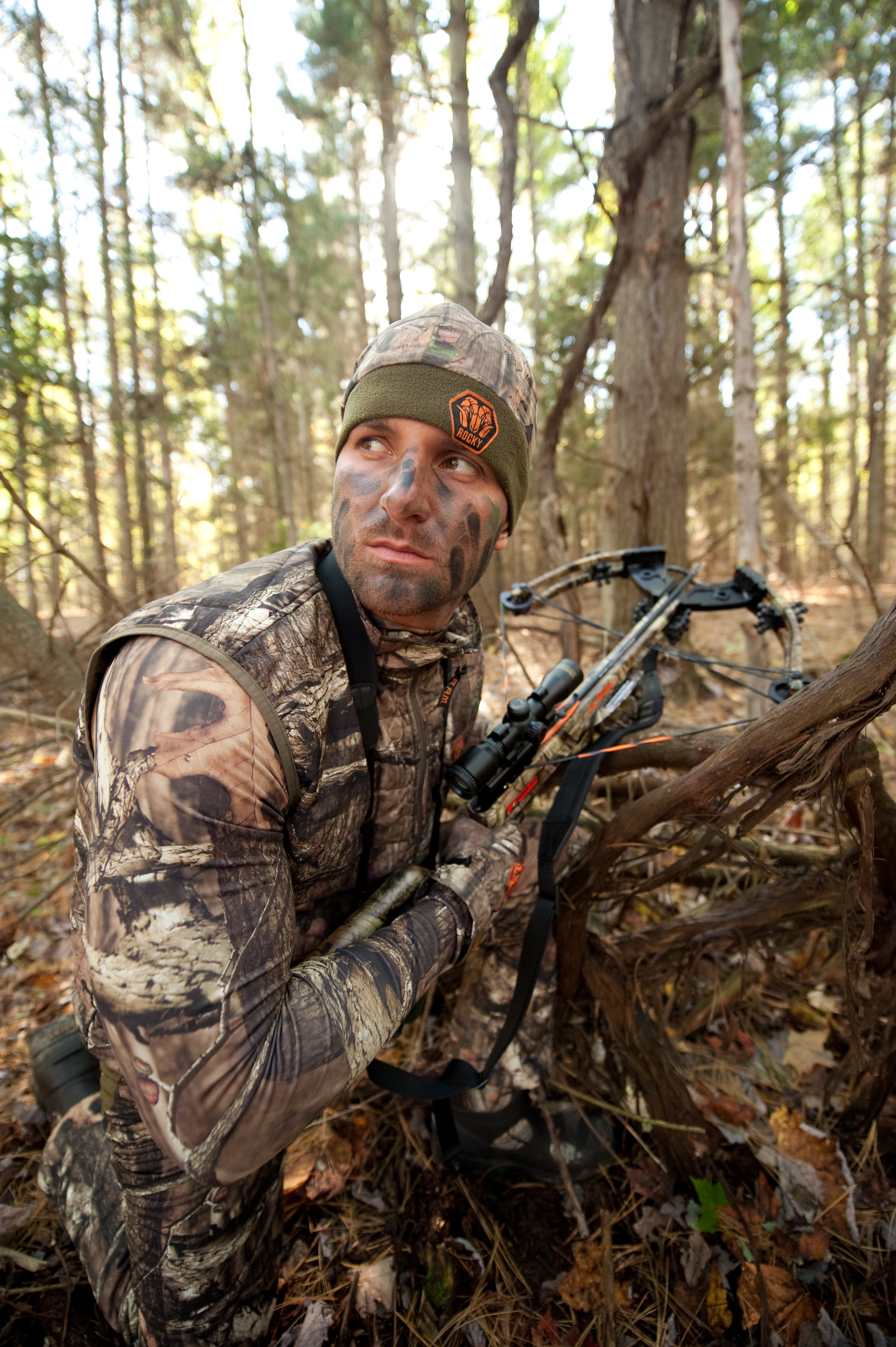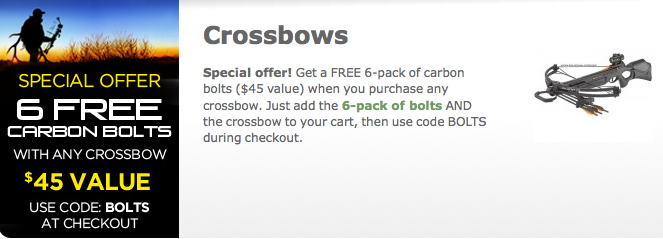Crossbow hunting is growing across the country. If you’re thinking of joining the horizontal archery world, here are 10 things you need to know about crossbows.
By Al Raychard
 Crossbows, by design, are not that complicated. In the simplest terms, a crossbow is nothing more than a smaller vertical bow attached to a stock. On a technical level, crossbows are different from vertical bows in several ways. The arrows used are shorter, and crossbows have a much shorter power stroke. Even though crossbow arrows and arrows shot from modern compounds travel at comparable speeds, the ballistic characteristics and attributes of the two are as different as night and day and bring their own their unique limitations and challenges to the hunting field.
Crossbows, by design, are not that complicated. In the simplest terms, a crossbow is nothing more than a smaller vertical bow attached to a stock. On a technical level, crossbows are different from vertical bows in several ways. The arrows used are shorter, and crossbows have a much shorter power stroke. Even though crossbow arrows and arrows shot from modern compounds travel at comparable speeds, the ballistic characteristics and attributes of the two are as different as night and day and bring their own their unique limitations and challenges to the hunting field.
Although gaining in popularity and acceptance, the modern crossbow remains somewhat of a novelty to the general hunting public. With that said, there are certain things about crossbows that should be understood to achieve optimum performance in the field.
1. They are Short-Range Tools
More so than vertical bows, crossbows are short-range hunting instruments. The maximum recommended range by just about every crossbow manufacturer is 40 yards, with 25 to 30 yards considered optimum. When hunting, that is a critical rule to live by. There are reasons for that, including the crossbows short power stroke and the short, light arrows used.
We could talk about specifics and comparisons all day long, but the bottom line is: Compared to heavier and longer arrows from vertical bows, crossbow arrows drop like a rock and lose energy quickly after leaving the rail. What’s more, they do not stabilize well at long range. It takes energy to kill game at long distances, and crossbow arrows simply do not have it.
2. You Need to Uncock It
Theoretically, once cocked, crossbows could remain locked into firing position indefinitely. It is not unusual for some hunters to leave their crossbows cocked for days, even weeks. Bad idea. Leaving a crossbow cocked for extended periods of time increases stress on the limbs, strings, cables and trigger mechanism and shortens the life of all these components. It is best to fire the bow at the end of each day’s hunt. The easiest way to do this while hunting is to carry a practice arrow with a field point and release the bow into soft ground when the day is done.
CROSSBOW BUYER’S GUIDE: GET FREE CARBON BOLTS
Keep in mind, too, most states and provinces have regulations stipulating when a bow is considered loaded or when and where crossbows must be uncocked, such as at the close of legal hunting hours or in a vehicle, for example. Whatever the case, releasing and reloading is the best medicine for long crossbow life.
3. They Can Withstand the Elements
I have used crossbows in the blistering heat of the Deep South and bone-chilling cold of the far North day after day with no visible affects on performance or accuracy. However, it is best not to leave crossbows for long periods of time in direct sun because excessive heat has a tendency to quickly dry strings shortening their life.
During normal hunting conditions, properly maintained crossbows will get the job done in heat, cold or adverse weather.
4. Maintenance is a Must
They’re not just words, but words to live by. Regular maintenance plays a major roll in the overall performance, accuracy, effectiveness and life of a crossbow. The owner’s manual that comes with every crossbow will be the best guide here, but under normal use cables and strings should be replaced every three years or so — sooner if needed.
Through time, strings and cable stretch, including steel cables, resulting in lower draw weight. This will affect arrow speed, range, trajectory and energy. Rails should be lubed with a high quality lube according to manufacturer’s recommendation, and it is a good idea to wax strings, except the center serving, at the same time. Both will ensure longer string life. It is not unusual for quality strings to last 150 shots if not more, but lubing and waxing is the key.
From time to time, crossbows might require adjusting, or tuning, especially the braced height (the distance between a braced string and underside side of the riser measured from the string’s center) and the tiller, the balance between the two limbs, which should be equal in pull length and weight. If a crossbow consistently shoots high or low, or if arrows show wear marks on the shaft from the rail, the problem might be improper brace height, or the bow is out of till.
5. You Need to Cock it Properly
This cannot be overemphasized. Most crossbow accuracy problems are caused by an improperly cocked bow. This is especially true with new bows and novice shooters (and when cocking by hand).
Other factors contribute to poor or unreliable accuracy but — before those are considered — concentrating and developing a proper cocking technique will generally cure the problem. To achieve accurate and consistent arrow flight, the string must be drawn and locked into position with an equal length of serving on each side of the rail. If not, the arrow is released with an uneven amount of energy, resulting in inconsistent downrange groups. As little as ⅛-inch can make the difference between hitting and missing the vitals on a deer at 25 yards.
If cocking by hand, the problem is easily remedied by indexing or marking the server with a permanent marker on each side of the rail when the bow is at rest. When the bow is drawn and locked, the index marks should be in the same position on each side of the rail. Cocking ropes also help keep the serving properly aligned while reducing the draw weight by as much as 50 percent and are one of the most beneficial and helpful crossbows aides to invest in.
6. Arrow Selection is Crucial
Crossbow arrow selection seems complex at times, or some folks make it seem that way. Easy solution: Always use arrows recommended by the manufacturer.
BEST CROSSBOW BOLTS
The arrows selected by manufacturers for their various models take shaft length, diameter, spine, mass weight, fletching specifications, type of nock and front of center (FOC) into consideration to achieve optimum performance and accuracy at normal hunting distances. If you deviate from what is recommended, performance might be sacrificed. Damage to the bow can also occur, resulting in voiding the factory warranty. Bodily harm to the shooter is also a possibility.
Don’t make a simple decision into a complex dilemma. This isn’t rocket science: Use arrows the builder recommends.
7. Safety is Important
Crossbows are not toys and should not be treated as such. Those are simple words, but they are extremely important just the same.
Consider the owner’s manual as your crossbow bible. Read it, understand it and — if you have questions — contact the manufacturer. On a basic level, handle a crossbow as you would a firearm. But the crossbow is unique and, therefore, special safety considerations apply. For example, never carry a crossbow when locked and loaded with an arrow. When shooting, always keep fingers and thumbs below the shooting rail. If you don’t, a surprise is coming, and it will hurt.
Before shooting, check the bow for damaged or loose parts, especially the limb bolts, retention spring and wear and tear on the string, serving and cables. Also, a crossbow should never be fired without an arrow.
When sighting in or practicing, bystanders should be positioned behind the shooter, not to the side. And, when hunting from elevated stands, crossbows should be cocked on the ground, elevated into the stand with a rope and loaded only when the hunter is safely seated, in position and ready to shoot. When hunting from ground blinds, ample room should be available for the bow limbs to expand.
8. You Need to Keep it Level
Cantering is when one limb of a crossbow is held lower than the other, and it is a common problem for novice shooters and even experienced shooters at times in hunting situations.
If you canter the bow to the left, the arrow will hit left and most likely high or low depending upon the range. If you canter to the right, the arrow will hit right, and again high or low depending upon range. For optimum and consistent accuracy, crossbow limbs must be level when the trigger is pulled. Cantering is rarely a problem while sighting in or practicing off a rest or bench, but off-hand shooting in hunting situations compounds this problem. This is especially true when sitting, because the inside limb has a natural tendency to drop as we swivel to get into shooting position.
To cure this problem, practice shooting as often as possible from different positions. Concentrating on keeping those limbs parallel with the ground is the best way to eliminate the problem.
9. Real-Life Practice is Important
This advice rings true for any type of deer hunting: Practice the way you hunt, and hunt the way you practice. Crossbow arrows equipped with fixed-blade or expandable broadheads do not fly as fast or on the same trajectory as arrows equipped with field points. Expandable heads are close, but there is still a difference. To be absolutely sure how a crossbow will perform with a hunting head, it is important to practice with that same head at various yardages. This means with the same exact arrows and broadheads of the same style and weight.
After sighting in with a field tip, changing to a hunting head will tell us whether adjustments have to be made. Some will be minor tweaks; others will be more complicated. It is best to make those corrections before hitting the deer woods. Also, keep in mind that crossbow arrows lose speed and drop quickly. If you will be hunting from elevated stands, practice shots from the same height.
10. You Need to Keep it Simple
You needn’t give up your day job to crack the code for obtaining optimum crossbow accuracy and performance. Some folks would want you believe that it is an incredibly delicate science. It’s not.
Manufacturers have done a great job in designing and testing today’s horizontal bows, even noting what arrows to use with various makes and models for peak performance. With occasional care, today’s crossbows are practically maintenance-free and — if we follow the manufacturer’s recommendations — will provide years of serve. If there is a problem, dilemma or question, manufacturers are just a phone call away.
All the hard work is done. Our job is to understand the crossbow and its limitations. We should not expect the crossbow to do more than it was intended — and that is simply to be a reliable hunting companion.
— Al Raychard is a crossbow hunting expert from Maine.
Win a $800 Crossbow Package!
Fill your hunting closet with prizes from Deer & Deer Hunting‘s Giveaways. Each month through the end of the season, you can enter this hunting sweepstakes for free for a chance to win these terrific items and hunts from Deer & Deer Hunting‘s partners.
Tell Deer & Deer Hunting your favorite wild game recipe and be automatically entered to win Wicked Ridge Crossbows’ new high-performance Raider CLS! Enter until November 30, 2012.
ENTER HERE to submit your wild game recipe for a chance to win a free Wicked Ridge Crossbow!



